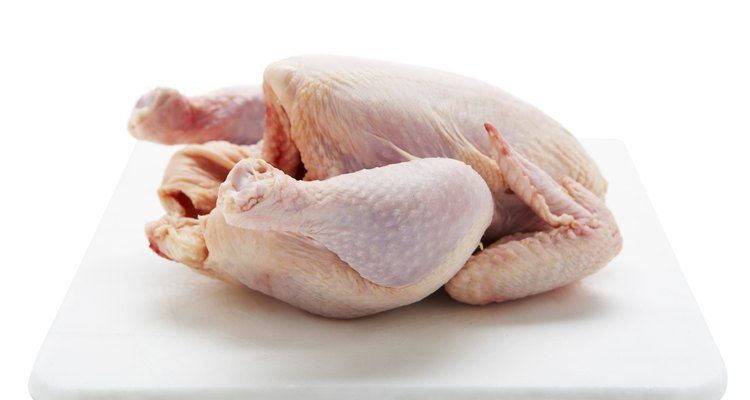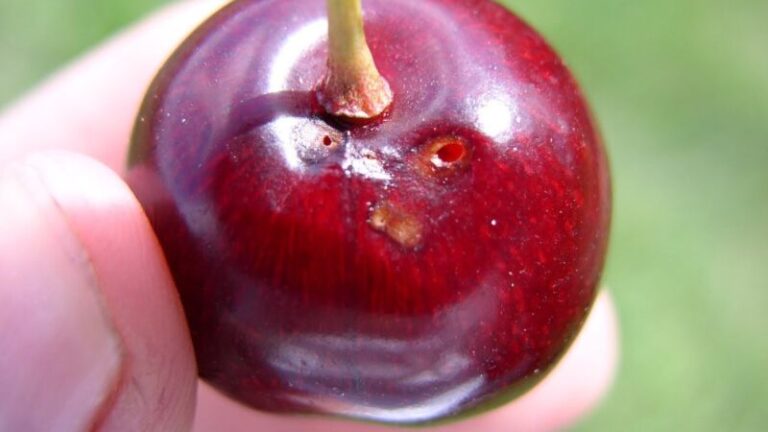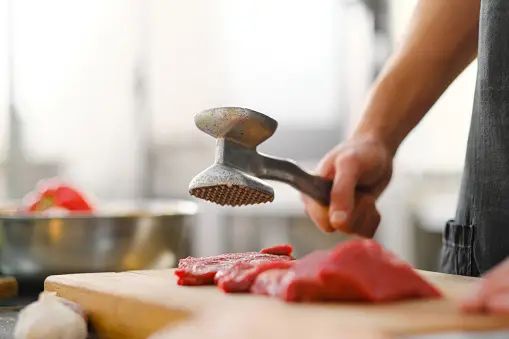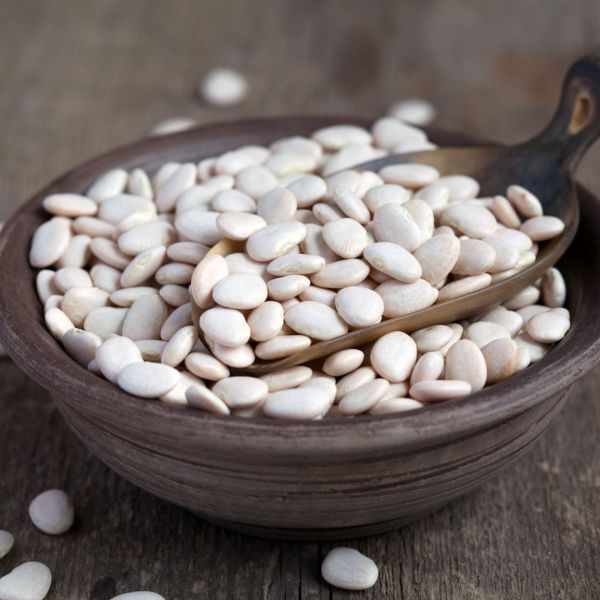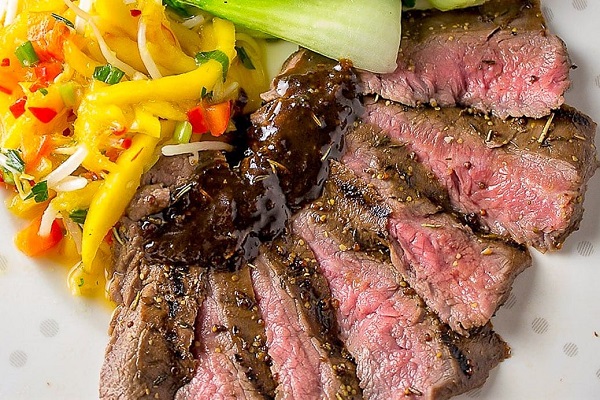How to Tell When Raw Chicken Has Gone Bad?
Chicken is an increasingly versatile source of protein used worldwide in various cuisines. It is important to ensure that the chicken you consume is fresh and safe to eat. Recognizing the signs of spoiled chicken is crucial in preventing foodborne illnesses and maintaining good health.
In this article, we will explore why raw chicken is bad for you, how to tell when raw chicken has gone bad and essential tips for ensuring food safety.
The Hazards of Consuming Raw Chicken
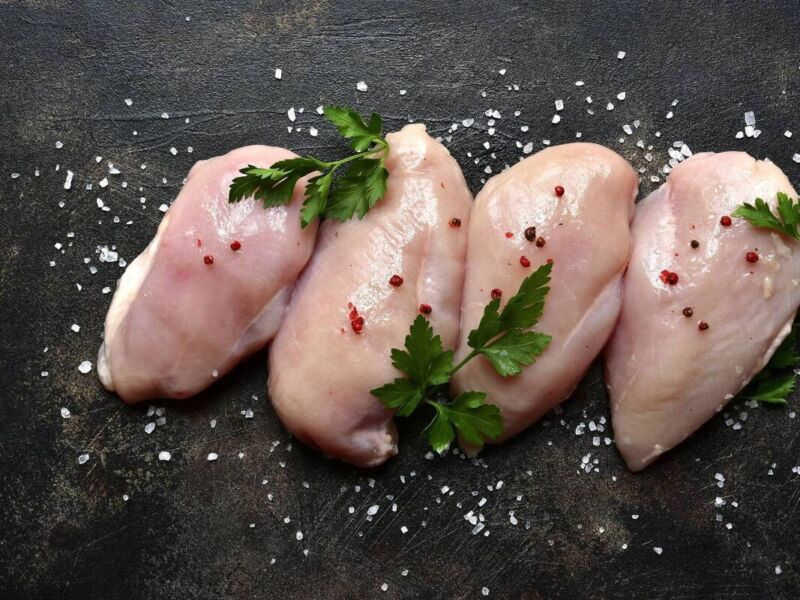
Poultry, including raw chicken, falls under the category of time/temperature control for safety (TCS) foods. This means that it requires specific temperature control to prevent bacterial growth. Raw chicken is particularly vulnerable to bacterial contamination if not handled properly.
The risks associated with undercooked chicken and cross-contamination are significant. Consuming undercooked chicken may expose people to potentially hazardous bacteria such as Salmonella or Campylobacter.
Additionally, cross-contamination can occur when raw chicken comes into contact with surfaces or other foods, leading to the spread of harmful bacteria.
Preventive measures to avoid foodborne illnesses include cooking chicken to the minimum internal temperature recommended by health authorities, avoiding cross-contamination, and practicing good hygiene.
Proper handwashing is crucial to prevent the spread of germs and reduce the risk of foodborne illnesses.
4 Ways to Tell Your Chicken Is Bad
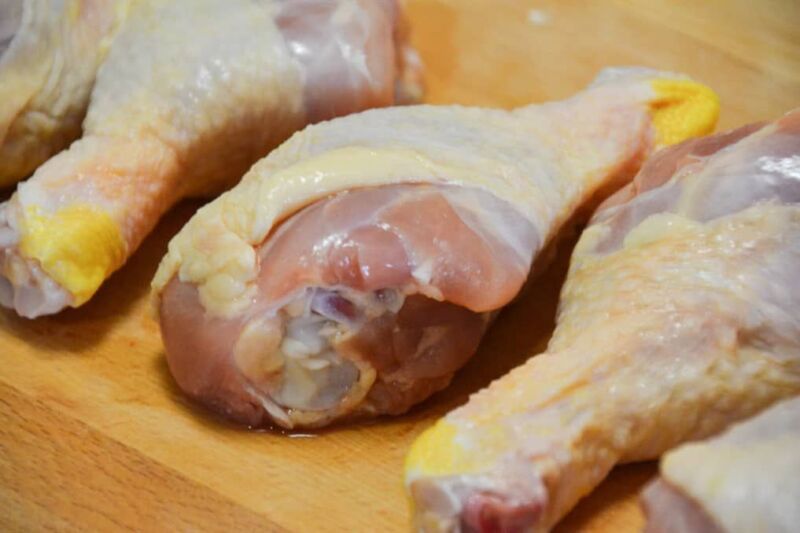
To ensure the safety of raw chicken, it is essential to know how to identify signs of spoilage. Here are four ways to tell if your chicken has gone bad:
- Sell by Date: The first step is to check the “best by date” on the packaging. Guidelines for using or freezing chicken within a specific timeframe should be followed to prevent the consumption of spoiled chicken.
- Color and Packaging: Fresh raw chicken has a pink hue with white fat parts. Any significant changes in color, such as yellow or gray tinges, or the presence of mold, indicate spoilage. Additionally, frozen chicken packaging that shows signs of thawing and refreezing should be avoided.
- Smell: Recognizing strange and unpleasant odors is crucial. While raw poultry has a distinct odor, a funky smell resembling rotten eggs or a sour smell suggests that the chicken has gone bad.
- Feel: Texture indications can also help determine if the chicken is spoiled. If the chicken feels slimy, sticky, or excessively dry, it is likely spoiled. Conducting a press test by pressing the flesh can reveal if the chicken is of good quality. Soft flesh that leaves an imprint indicates bad chicken.
Can You Rescue Spoiled Chicken?
It is strongly recommended by experts not to salvage bad chicken. Consuming spoiled chicken poses a significant risk of food poisoning.
The bacteria present in spoiled chicken can cause severe gastrointestinal illnesses and other health complications.
To prioritize food safety, it is best to discard any chicken that appears spoiled.
Additional Tips to Ensure Food Safety
Beyond identifying spoiled chicken, here are some additional tips to ensure food safety:
- Proper Storage: After purchasing raw chicken, it should be immediately refrigerated or frozen. Leaving chicken at room temperature can promote bacterial growth. It is crucial to store raw chicken separately to prevent cross-contamination with other foods.
- Cooking to the Appropriate Internal Temperature: Chicken should be cooked to a minimum internal temperature of 165 degrees Fahrenheit (74 degrees Celsius). It is important to check the thickest part and multiple locations using a thermometer to ensure proper cooking.
How Long Does Cooked Chicken Last?

Cooked chicken should be consumed within four days to maintain its quality and safety. It is best practice to refrigerate any leftover cooked chicken promptly. Alternatively, cooked chicken can be frozen for extended storage.
Potential Dangers of Consuming Questionable Leftovers
Consuming old food, including questionable leftovers, can pose serious risks to your health. It is essential to consider food safety beyond visual and sensory tests.
Leftovers can harbor harmful bacteria or toxins that can cause foodborne illnesses. In some cases, these illnesses can be severe and even fatal.
Considering the potential risks, it is always better to err on the side of caution and discard any questionable leftovers.
Conclusion
When it comes to raw chicken, prioritizing food safety is paramount. Understanding the risks associated with consuming undercooked or spoiled chicken is crucial for preventing foodborne illnesses.
By following the guidelines outlined in this article, such as recognizing signs of spoilage and practicing proper food handling and storage, you can ensure the safety of your chicken and protect yourself and your loved ones from potential health hazards.
Remember the principle of “When in doubt, throw it out” and always prioritize food safety over consuming potentially risky chicken.
